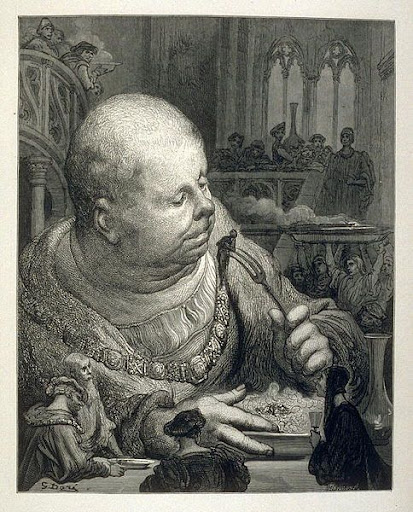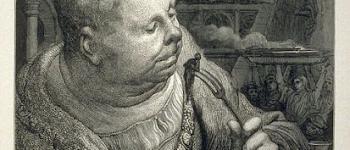
Legend has it that during his journey, Gargantua, a famous giant with an overflowing appetite, went as far as the Marais.
With long strides, he crossed the plains from East to West, leaning on the steeples and the hills. But the sticky peat weighed down his hooves, and he had to pick them up often, leaving behind him mounds of earth. Thus he created the mounds of Sainte Macrine and La Garette. But these long, incessant walks whetted his legendary appetite, and above all made him so thirsty that he swallowed the rivers with their boats and bargemen.
One day, exhausted, he sat on the bell tower of the church of Notre-Dame de Niort, one foot on that of Fontenay-le-Comte, the other on that of Luçon. His thirst was such that he gulped down all the water of the Sèvre and its tributaries, thus drying up the Marais all the way to the sea. But after having drunk so much, a pressing desire was not long in coming, and Gargantuase relieved himself in the western plains of Niort, giving birth to the Wet Marshes.
A look back at an astonishing birth...
Gargantua was born, after eleven months' pregnancy, to Grangousier and Gargamelle, daughter of the king of the Parpaillons, during a sumptuous banquet at which the guests made incoherent remarks. Gargantua is born in a strange way: having eaten too much tripe, Gargamelle is given an astringent that causes Gargantua to be born through his left ear, enabling Rabelais to describe Gargantua's entire journey through his mother's body.
As soon as he was born, he immediately asked for a drink. His father, on discovering his son clamoring for a drink, exclaims: "Que grand tu as", implying the size of his gullet. This is why the child is christened "Gargantua". In fact, it took the milk of no less than 17,913 cows to feed him.
Translated with DeepL.com
(free version)






